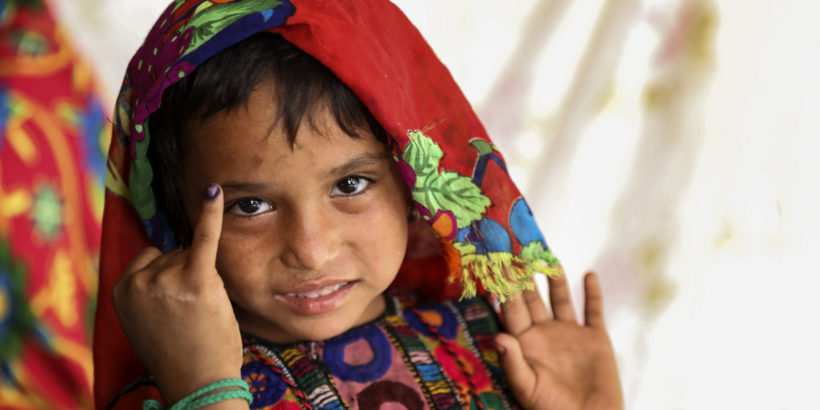As 2019 comes to a close, it’s a good time to reflect on the major milestones and progress that the typhoid community accomplished this year. After a busy and fruitful 12 months, here are 5 highlights that helped make this year a success.
1. Pakistan becomes the first country to introduce typhoid conjugate vaccine (TCV)
Pakistan became the first country in the world to introduce TCV into its routine childhood immunization program, taking a major step forward to protect its children from typhoid. Beginning in Sindh Province with a 3-week vaccination campaign in urban areas, 9.8 million children aged 9 months to 15 years were vaccinated against this potentially deadly disease. Sindh Province is now transitioning to routine immunization for all infants at 9 months old, and Pakistan will continue rolling out the vaccine in 2020 and 2021 until it is available to all infants nationwide.
2. Nepal TCV efficacy study publishes major results
Interim results from a Phase 3 study were published in the New England Journal of Medicine that provide additional evidence on the efficacy of TCV. In Nepal, which has one of the highest typhoid burdens in the world, the vaccine prevented 81.6% of typhoid cases in children between 9 months and 16 years of age. In other words, 8 out of 10 children vaccinated were protected from typhoid. These results are strong evidence from a typhoid-endemic setting that TCV provides substantial protection against typhoid in the areas that need this vaccine the most. The study, which was led by the Typhoid Vaccine Acceleration Consortium’s team in Nepal, will continue to follow the participants for two years.
3. TCV is cost effective
Cost is often a part of country decision-making for new vaccine introduction. An analysis of the cost-effectiveness of routine and campaign use of TCV in low- and middle-income countries with varying typhoid burdens was conducted this year to help identify the most cost-effective vaccine strategy for each country. In general, vaccination is likely to be cost-effective in countries with high typhoid incidence, high cost of typhoid treatment, and/or high death rates from typhoid. The results also indicate that it is always cost-effective to include a catch-up campaign when introducing routine typhoid vaccination, and that routine vaccination plus a catch-up campaign to 15 years of age is the most cost-effective strategy in the majority of countries included in the analysis. These results can be helpful as policymakers decide on optimal vaccination strategies for their country. Looking to dive deeper into these results? Stay tuned for an upcoming tool on our website in early 2020 that will allow users to explore the cost-effectiveness results for individual countries.
4. New research and data on typhoid available
2019 has been full of new research about typhoid and TCVs, adding to our knowledge about this disease and prevention efforts. In March, the Coalition against Typhoid held the 11th Conference on Typhoid and Other Invasive Salmonellosis, bringing together scientists, researchers, government officials, and health organizations to share new data and research on the threats of drug resistance, potential for broader use of TCVs, and the need for better integration with water and sanitation experts. Additionally, several new publications came out this year providing insight into disease burden, drug-resistance, TCV introduction in Asia and Africa, and more.
5. TCV is used to stem outbreaks
Both Zimbabwe and Pakistan deployed TCV as part of their response to typhoid outbreaks this year. In Zimbabwe, TCV was used to stop an outbreak in Harare in February, the first-ever outbreak response TCV vaccination campaign in sub-Saharan Africa. During the course of 8 days, more than 318,000 people were vaccinated and therefore protected from disease. Additionally, Pakistan used TCV in Sindh Province beginning in April as part of their efforts against an ongoing extensively drug-resistant (XDR) typhoid outbreak. The XDR typhoid strains are resistant to all but one oral antibiotic, making it more challenging and expensive to treat, and increasing the urgency for prevention.
While 2019 has been a tremendous year, the work to take on typhoid is only beginning. We look forward to 2020, when Liberia and Zimbabwe join the list of countries that have introduced TCV into their routine childhood immunization programs, protecting millions more children from this dangerous disease. We are ready to continue the momentum for typhoid prevention and control, sharing the latest data and supporting countries in the decision-making process for vaccine introduction.
Photo: PATH/Asad Zaidi.



